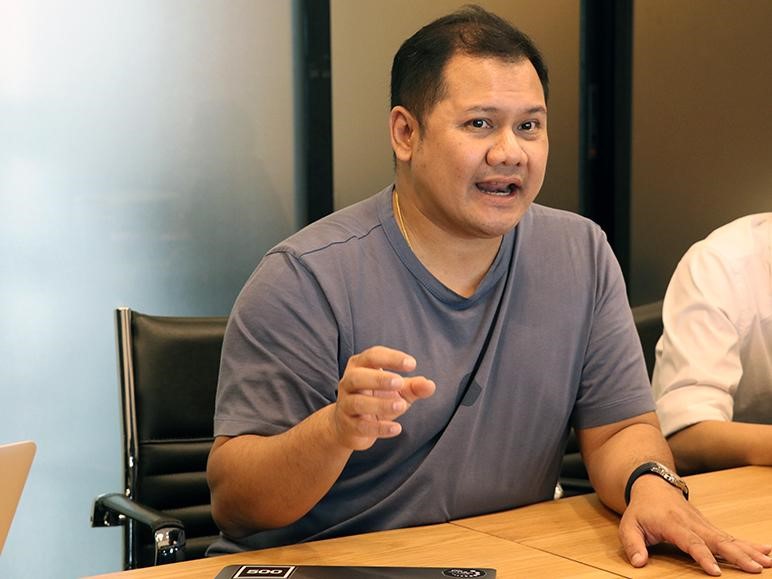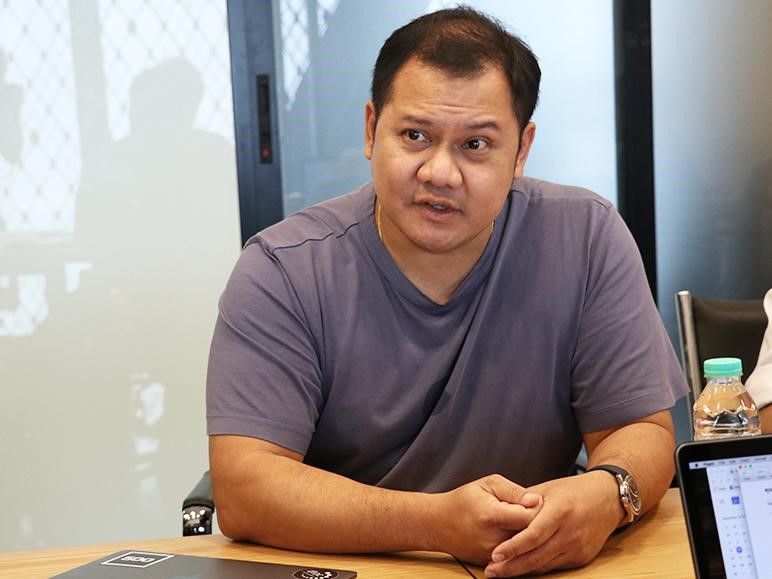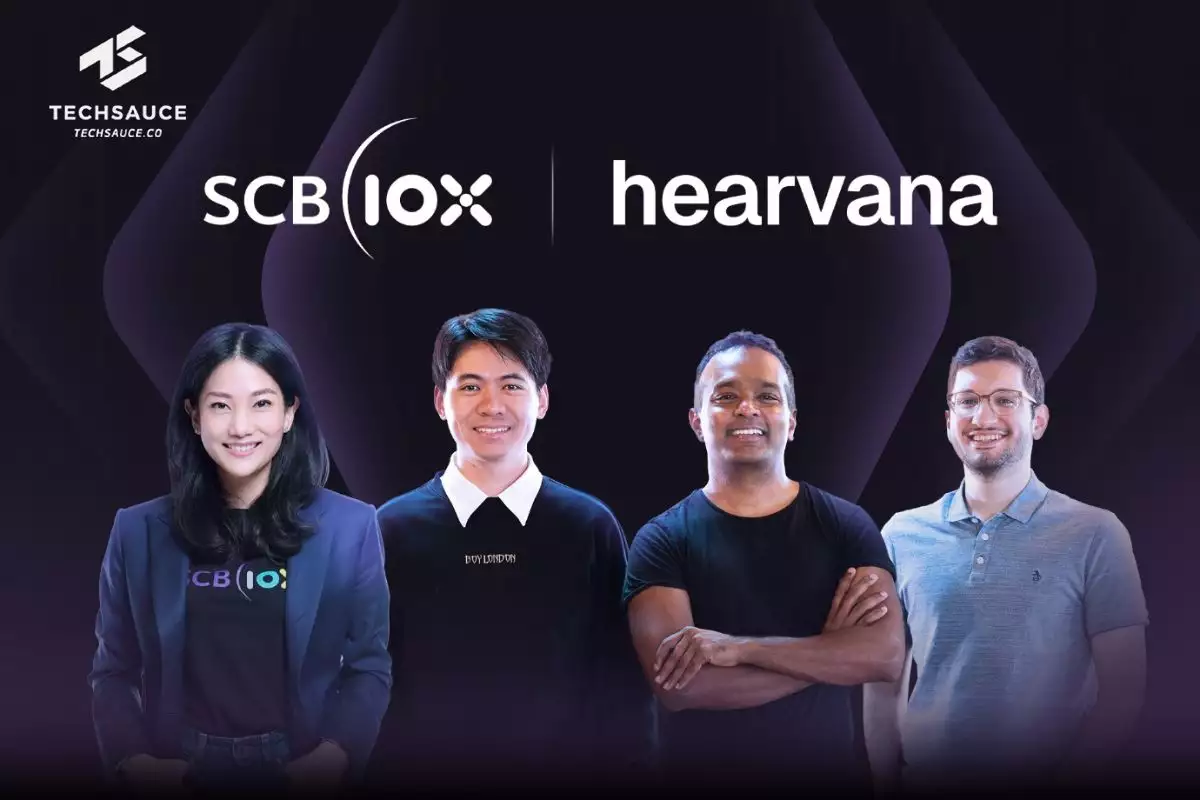What is LINE MAN’s true valuation?

- Adequate startup valuation is all about finding the right tool
- Maintaining low costs, ecosystem building or localization, and other important factors elevates LINE MAN’s valuation above 2 other competitors
- In the early stage of startups, strong teams are more important than products
- In the longterm it is dangerous when startups exaggerate their valuations. It is like buttoning the wrong button right from the start.
- Each country has factors that influence the valuation of startups. Thailand’s country discount is as high as 20%.
500 TukTuks Managing Partner Krating Poonpol on the basics of LINE MAN's valuation.
Valuation is an important key among investors to finding the right company to invest in. Techsauce had the chance to talk with Krating Poonpol, the managing partner of micro-fund 500 TukTuks. Techsauce interviewed Krating, a man known as the godfather among the Thai startup circle, about the right principles in calculating valuation and he reveals the true valuation of LINE MAN.
In our talk with Krating he addressed factors ranging from the potential within startups to outside factors such as the impact of the economy of each country on the ecosystem startups are in. With a vast amount of experience in the startup world, Krating did not hold back on giving his insight on various case studies and in-depth analysis.
Note: The following interview utilizes technical English words as spoken by then interviewee. A certain level of knowledge on startup terms is needed to understand the interview thoroughly.
There are many methods used to calculate valuation in each market that are different from one another. Could you please give the basic knowledge of each method?
Krating: It really depends. If it is a marketplace, the main tool used would be the Gross Merchandise Value (GMV). In the case of marketplace, whether it is a product or a service, if the margin is about 20-30%, the valuation would be 1-2 times the GMV. If the median is at 1.6-1.7 times then you have to see. If it is the marketplace valuation is at about 1 times - no more than 2 times the GMV.
Of course there are premium factors because sometimes once it is dominated the cost structure will fall. So there is a possibility to have premium factors result from the nature of the market place where a network effect occurs from the interaction of sellers and buyers. For example a large amount of buyers would attract more sellers to come in. Once there are many choices available, consumers are happy. Customer acquisition cost will then drop. Operation costs will come down. Once this happens, premium factors will increase.
Meanwhile there are many markets such as the service marketplace where products are differentiated by high value service. The result is market where each provider has its own distinct service. Sometimes this may bring about problems and lead to consumers seeking services outside the market place. There is then no premium valuation. Therefore there needs to be an adaptation or SaaS (software as a service). ARR or annual recurring revenue is used. SaaS is mainly 3-4 times of that of ARR or revenue that occurs every year. However you have to look at the churn rate (the annual percentage rate at which customers stop subscribing to a service) and see that it does not exceed a certain amount. Look at the gross margin and the customer lifetime value should be 5 times that of the customer acquisition cost. Sometimes it can be 4 times the ARR. Let’s say if we get one customer to spend 100 Baht. Once a customer pays for subscription, it takes just three months after for it to be worth the investment you made for customer acquisition. The shorter the time it takes, the more premium it is is because the amount that exceeds your investment is all profit.
In your VC 101 Class, you talk about the valuation model of LINE MAN. Can you explain further on how you analyze the company?
Krating: LINE MAN uses a method called “user economics”. We see what economics of each user are. This is a method most applicable for LINE because at the end LINE MAN is basically considered a mini super app, meaning it is a convenient store, e-commerce, and food delivery. So the easy method is to look the potential revenue from each user.
I also conducted a research to find out how many purchases are made by each user, how big is their basket size, how much do they pay for delivery, and what is the percentage that LINE MAN receives. Most of these numbers are already publicly available and I able to estimate how much revenue each user is worth. LINE MAN probably has around 1.5 million users which is a reasonable number when you look at the population of Bangkok and other big cities. We do not see many users in the rural areas using the app in the short term. We are able to estimate who many users on average use the app per month. We estimate there is an average of 10 orders a month by each user. This is expected to increase.
What happens is LINE MAN changes consumer behavior on two fronts. First is having users willing to pay for convenience in having their items delivered. Second, it makes users used to the convenience of the delivery service and sometimes creates power users, people who are willing to pay for a delivery fee that is worth more than the product itself. Power users make up 15% of the market.
We think the user economics we have observed show the potential for great revenue. There is still 1.5 million users to tap into. Another advantage is LINE MAN has a very low customer acquisition cost because LINE already has 40 million users in its customer base. We also estimate that users will stay with LINE for at least 5 years. We still do not know whether LINE and its convenience will die out in 5 years or not. It is like Pandora’s box. When you open it, you are used to the convenience.
The entry of two major competitors will ultimately get users to be willing to pay for convenience. At the end, the behavior consumers in the market will be changed and people will not be able to return back to the way life was before. What we call “stickiness” will occur and the apps that have “stickiness” for more than 5 years will be quite ok. We have therefore estimated the LINE MAN customer lifetime value for each user is at 11,000 Baht. This will be from food delivery, e-commerce, and the convenient store. This does not include the potential services LINE might launch in the future. We forecast that altogether it will be worth 13 billion Baht or about $408 million, which is our base case.
However the worst case scenario from the entry of two competitors is that they will be super apps as well. This may cause a 20% drop in orders. We believe it will fall at this level because at the end, the market will get bigger because of the competition between the three main players. Once the market is bigger the total orders will also increase. However the cost of customer acquisition will increase 3 times more because this is something that usually occurs with e-commerce. Profit will decrease, decreasing the customer lifetime value to 6.7 billion Baht in 5 years and the base case of 11,000 Baht will lower by 40%. So once the cost increases massively, the customer lifetime value will lower. In the worst case scenario, the total value will be left at $143 million or 4.5 million Baht.
Finally we believe LINE MAN will end up being the winner in the market. The life time value of all three markets will be at 24,000 Baht per one user, growing 2.4 times. At the end it will be at 27 billion Baht or $847 million. This is in the case that LINE MAN wins.
In the case that LINE MAN wins all markets, its market share will be at 60-70%. With this market share and a valuation fo 27 billion Baht, the value of the whole market will reach 40-50 billion Baht. Is it possible? We believe it is because it includes all three markets of food delivery, e-commerce, and convenient stores. This is in the case that LINE MAN wins. If it wins, it could be even bigger in 5 years and this is from our analysis of user economics.
What can be analyzed from the base case or worse case scenario?
Krating: Even in the worst case scenario, it is still a centaur (a startup with a value of more than $100 million). It has a valuation of $150 million. That makes it the biggest startup in Thailand. We are talking about a startup with a a valuation of $150 million. There are only 3% of startups that are valued at this size. This is the worst case scenario. LINE MAN is among the top 3% startups in the world. I would say LINE MAN’s business is pretty secure. At the same time, the base case that we are looking at is at $400 million. This makes it among the top 10 tech startups in Southeast Asia. We are only talking about the service of LINE. If we look at the consumer app, LINE MAN is among the top 5. I have not calculated the whole valuation of LINE. If I did for LINE Thailand, it would be a unicorn.
What advantage does LINE MAN have over its competitors in the industry in terms of valuation?
Krating: LINE MAN has many unfair advantages. Whether it be its low customer acquisition cost, the synergy of its efficient platforms, or its ability to localize. A good example of its localization is its partnership with Wongnai, a food review website that is used by many Thais for its food delivery app. This really answered the needs of Thais.
Another thing is LINE MAN has an asset-light business model. For example it takes in logistics work and gives it to others to do. Once it is an asset-light model, it can quickly scale up. With such low customer acquisition costs, once a user logins, his or her behavior can be changed. Money can than be quickly rotated for investment and with more people using LINE MAN, the switching costs is higher. It will make it more difficult for competitors to steal users. Once AI is developed further, it will be even more scary because logins will serve as a very high wall. Users will be in the ecosystem with LINE and it will be hard for competitors to go through the wall.
However LINE MAN’s competitors are not easy beat. For example one player entered the Thai market with $400 million, which is a large sum of money. Let’s assume their target is 1.5 million people, equal to that of LINE MAN. From $400 million you have thousands of Baht to acquire a user. It is definitely a money game. Yet LINE MAN still has an advantage. Others will find it hard to customize. If LINE MAN continues to customize or localize with a good understanding of Thai consumers and takes advantage of their user logins, it may be the key to its success.
The most important thing is LINE MAN already has a complete ecosystem and its customer experience is excellent. Say if I were to make 100 orders, there would be two orders that could go wrong. It provides quality service. As a power user I would feel that the two cases were just minor mishaps. Along with a complete ecosystem, LINE MAN already has the upper hand. Competitors on the other hand are forced to build their own ecosystems from scratch. Should one day LINE MAN win the top-of-mine awareness of consumers, users will not turn to other apps because using LINE services is already a part of their regular behavior.
How much do you think growth will be?
Krating: Growth is 3 times or maybe 5-10 times within the next 5 years because consumer behavior changes all the time. Another thing is if we compare the online world with the offline one, it is still quite small, it is gradually growing. We are starting to see more Thais have the behavior of purchasing online content such as Netflix or LINE products. Thais will increase their spending online and this spending will eventually beat offline purchases. At the same time the total offline market is not growing. So those in the offline or traditional market need to change in order to survive.
If LINE MAN enters e-commerce, could it be a new B2B service?
Actually LINE is capable of reaching many targets with its strong user base and huge engagement. The question is, “What should LINE do?”. You have to understand LINE cannot do everything if it disrupts vertically. First LINE will lose partners. The most important thing is you are a platform. You cannot do everything. You have to trust partners because it is the key to your ecosystem. It is the matter of dividing economic interests. There are somethings you can do, but should you do them?
When calculating LINE’s valuation, do you take into consideration soft skills?
We barely considered it because it is a Series B, which does not really use soft skills. Once you are series B, it is about the numbers and the vision along with ambition. When you look at the corporate culture of LINE, it is a company that the new generation wants to join. It is about talent attractiveness. People who work at LINE love what they do. People will then work hard and the outcome will be good. So soft skills is about the culture of the company.
What is your advice for startups calling their own valuations?
If you are at the early stage, valuation is all about the team. It is not even about the product. I would compare the startup’s team with other startups’ teams in my portfolio. I would see what level of capability the team had when compared to other teams in my portfolio. I would ask questions to figure out where to rank the startup on my list. I have listened to thousands of pitches and it call boils down to the team.
I like people who are wrapped into their business and have deep understanding in business. What type of founders do you have? Are each person’s strengths being used? Most importantly there needs to be flexibility in learning new things because startups need to be able to adapt to new things. Also, I think the meaning of the word “passion” has been blurred. I have made mistakes and have learnt that people can have “fake passion”. You cannot have a “fake obsession”. Your passion for your work cannot be fake.
What is your advice for startups at Series A and higher?
If you are Series A, you are a business already. There are 4 factors that must be considered.
- Customer Efficiency: Every startup has to have a customer success engine. Customers use your product or service to solve a problem and you have an engine to help consumers successfully do this. How is your service or product better than the solutions currently in the market and what quickly doe sit solve problems?
- Capital Efficiency: It is when you recover customer acquisition cost, meaning it is when you get 1 Baht back from a customer which you acquired for 1 Baht. There is a link with the economic unit. For example if you pay 1 Baht, it is a customer acquisition cost and the life time value is 10 times. It is equal to 1:10. You have to invest a lot, but you also have to be mindful of another issue, the cash to cash circle. Once you invest, how long does it take get your return of investment? The good startups are the startups where we pay 1 Baht and the customer returns that investment with 5 Baht within a month. If you compare that to a startup that invests 1 Baht but gets 10 Baht in return within 12 months, the first case is better because once you get the money, you can use it to attract new customers.
- Team Efficiency: How efficient is each team member? Is the team regional? A Series A startup must have a regional team. It is not just a team full of Thais that have never gone overseas to do business. That is a formula for a disaster. You have to have an international team or at least a regional one.
- Lastly, how much can this business scale?
What do you think of startups that give themselves high valuations? How would you advise them so that they make more accurate valuations?
It definitely not a good idea to overestimate your valuation. I have seen many startups calculate valuations in the first round that is beyond their true value. Once they do this, it is a very hard road to follow because if there are investors that really give your funding, it means that these investors do not have a true understanding. Once it is too high it is like getting the first button wrong when putting on your shirt. Let’s say you have an inflated valuation of 2-3 years, you have to take 2-3 years to get to the valuation that you raised in the first round. So you cannot move further. What happens is a down round or a flat round. Many startups cannot progress further because in the first round their valuation overestimated and once you hit the down round or a lower valuation investors will be disappointed. Those that are burdened are the employees who receive poor returns, but have shares. Once the shares fall, it is like working hard for lower valued shares.
Does the difference between countries have an impact on valuations?
Of course it does. Thailand has a country discount of 20%. The valuation of startups with equal traction or more is still lower than those in other countries by 20%. The reasons for this are as follows:
1. In terms of regulations, they are not quite favorable towards startups. The government has been able to fixed 30% of them.
2. The track record of Thai startups has just started so there is not really much of one. The biggest exit made in Thailand was worth $70 million by Agoda, which did not reach $100 million. So it was not considered a big exit. Thai startups have been able to make small exits, but they are still quite small. We need to have large exits worth more than $100 million. There has been a research of startups from all over the world. The tipping point of each ecosystem is an exit that exceeds the value of $100 million. So once a Thai startup is able to exit with a value of over $100 million, the country will no longer need a discount and regulations would be successfully updated.
3. Thailand does not have enough tech talent. However the startup ecosystem has grown quickly. The problem lies with the education system. This is why we need to create StormBreaker to provide a solution for our flawed education system. This is however in the long term. At present we are competing with Singapore, which has already won over Silicon Valley with its tech talent attractiveness. Singapore’s tech talent is considered among the top pool of talent in the world. Thai startups are competing with those in Singapore so we have to improve our tech talent. With no track record or regulation there are problems and this is why we have a country discount.
If we look at the economy, how does each country’s economy impact the valuation?
Yes, there is an impact. It is not much. An example is Vietnam, a country with tech talent and it is not as expensive as Thailand. It has already proven to be successful in the recent wave. Once it became successful, there were mentors, angel investors, and Vietnamese who graduated and worked overseas who came back to the country. The spotlight is now on Vietnam, a country with an economy that is not as big as Thailand’s. The country’s economy’s size did not have as much of an impact when compared to other factors.
For startups in Singapore, they know they cannot remain in their own country because Singapore is small. So they have to start off as a regional company since day one and another thing is Thailand’s market is big enough to create SMEs that can make profit. Thai startups therefore do not have enough appetite to go overseas. Our appetite is not as big as those startups in Singapore and Vietnam.
In Thailand startups will mainly have to deal with various ministries. Compromises therefore need to be made. This then weakens solutions. Thailand needs a government that is brave enough to make concrete legal solutions in order to create a real ecosystem. It is not just about making political compromises.
ลงทะเบียนเข้าสู่ระบบ เพื่ออ่านบทความฟรีไม่จำกัด








